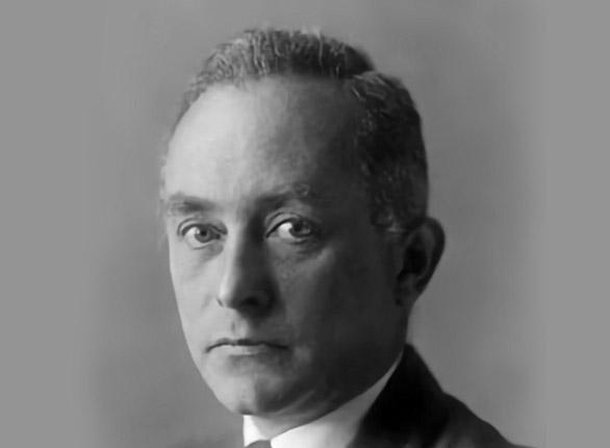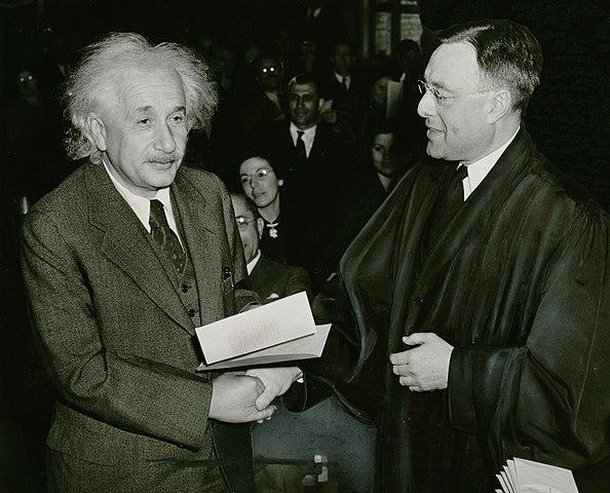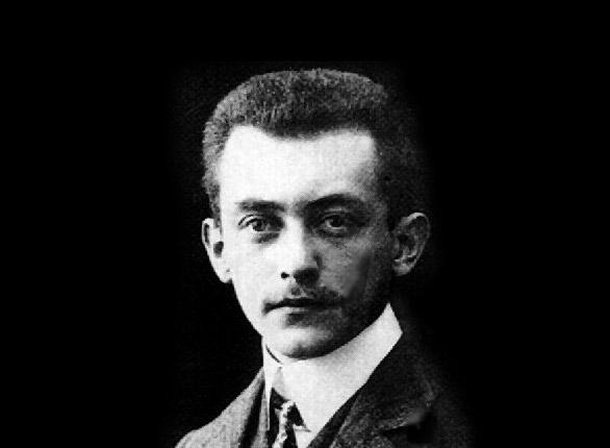Começar o artigo falando que Max Born era avô da atriz Olivia Newton-John é, sem sombra de dúvidas, iniciar pela parte mais ínfima de sua brilhante carreira. Isso porque Born possui um trabalho gigantesco e complexo, que o torna um dos cientistas mais importantes do século XX.
No entanto, nem todo mundo já ouviu falar sobre a vida e obra do homem que revolucionou a mecânica quântica, em especial por ser contemporâneo a outros geniais cientistas, como Werner Heisenberg, Paul Dirac, Erwin Schrödinger, Wolfgang Pauli e Niels Bohr. Partiu conhecer mais a respeito de Max Born? Confira.
O que era “a causa de todos os males”?
 (Fonte: Wikimedia Commons)
(Fonte: Wikimedia Commons)
Um dos fatos mais conhecidos a respeito do físico quântico alemão é ter alertado o mundo sobre “a causa de todos os males”. Trata-se de um trecho de seu discurso de aceitação do Prêmio Nobel de Física de 1954. Born foi agraciado pela “investigação fundamental na Mecânica Quântica, especialmente na interpretação estatística da função da onda”.
No texto de seu discurso, Max Born refletiu sobre as implicações filosóficas de seu trabalho. Para o alemão, a ideia de certeza ou verdade absoluta eram produtos da imaginação e não deviam ser itidos na ciência. De acordo com Born, era a crença nisso “a causa raiz de todos os males do mundo”.
Há quem considere que o prêmio foi ofertado tardiamente, já que, dos cientistas de sua geração, ele foi o último a recebê-lo. A Fundação Nobel lhe entregou a premiação 28 anos após ter concluído o trabalho pelo qual foi congratulado.
A amizade com Einstein
 (Fonte: Wikimedia Commons)
(Fonte: Wikimedia Commons)
Albert Einstein e Max Born não foram somente contemporâneos e cientistas. Entre a dupla, uma grande amizade se desenvolveu e foi levada até a morte de Born, em abril de 1955, quando Einstein faleceu.
A amizade foi longa e deixou para a humanidade uma fascinante coleção de cartas, que compreendem um período maior do que quatro décadas, tendo ado pelas duas grandes guerras mundiais. Entre as cartas trocadas pelos dois, debates sobre teoria quântica, o papel dos cientistas e sobre suas famílias, também sobre as coisas que fariam quando finalmente se encontrassem.
Foi nas páginas que trocaram que Einstein escreveu uma de suas mais famosas frases, em que recusava aceitar a visão probabilística que favoreceria a teoria que descreve como se comporta a matéria que compõe o pequeno universo das partículas atômicas e subatômicas. Curiosamente, era Born um dos principais defensores da interpretação que Albert contestava.
O legado de um gênio
 (Fonte: Wikimedia Commons)
(Fonte: Wikimedia Commons)
O maior legado dos anos de trabalho e pesquisa de Max Born é a interpretação estatística da mecânica quântica. Foi por conta da descoberta do cientista alemão que outros pesquisadores e estudiosos puderam prever o resultado de uma medição realizada em um sistema mecânico quântico.
Na área, a “Regra de Born” é um princípio-chave, por contribuir para o tratamento matemático do segmento. Seu legado se une ao de outros nomes, como Wolfgang Pauli, Werner Heisenberg e Erwin Schrödinger, que fizeram avanços importante e inovadores. Seu trabalho foi prejudicado por, em 1933, ter sido forçado a sair da Alemanha pelo partido nazista.
Na Inglaterra, foi professor em Cambridge, trabalhando com o físico polonês Leopold Infeld. Depois, ou dois anos na Índia, antes de mudar-se definitivamente para Edimburgo, na Escócia, onde permaneceu por 17 anos, até sua aposentadoria, em 1953.
Fonte: MegaCurioso.
